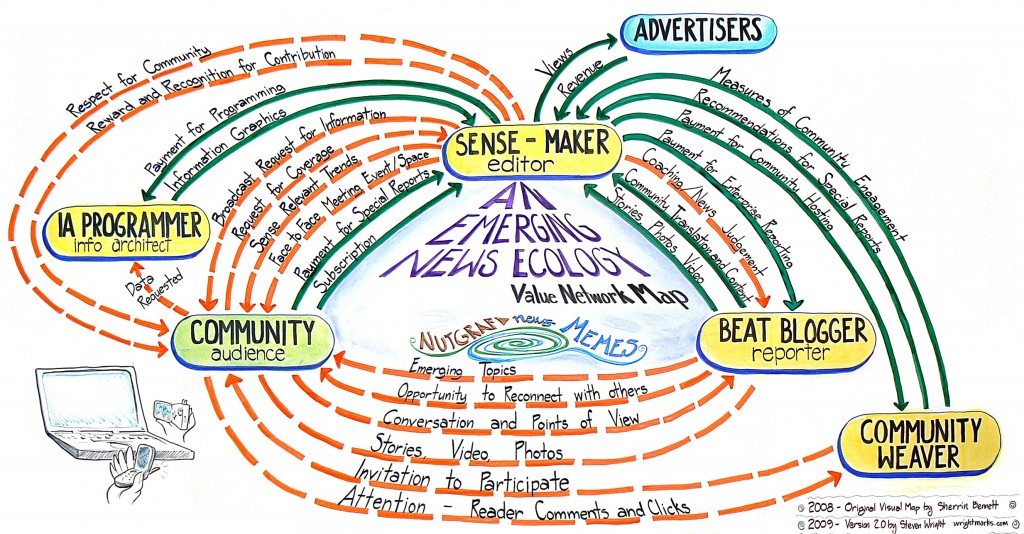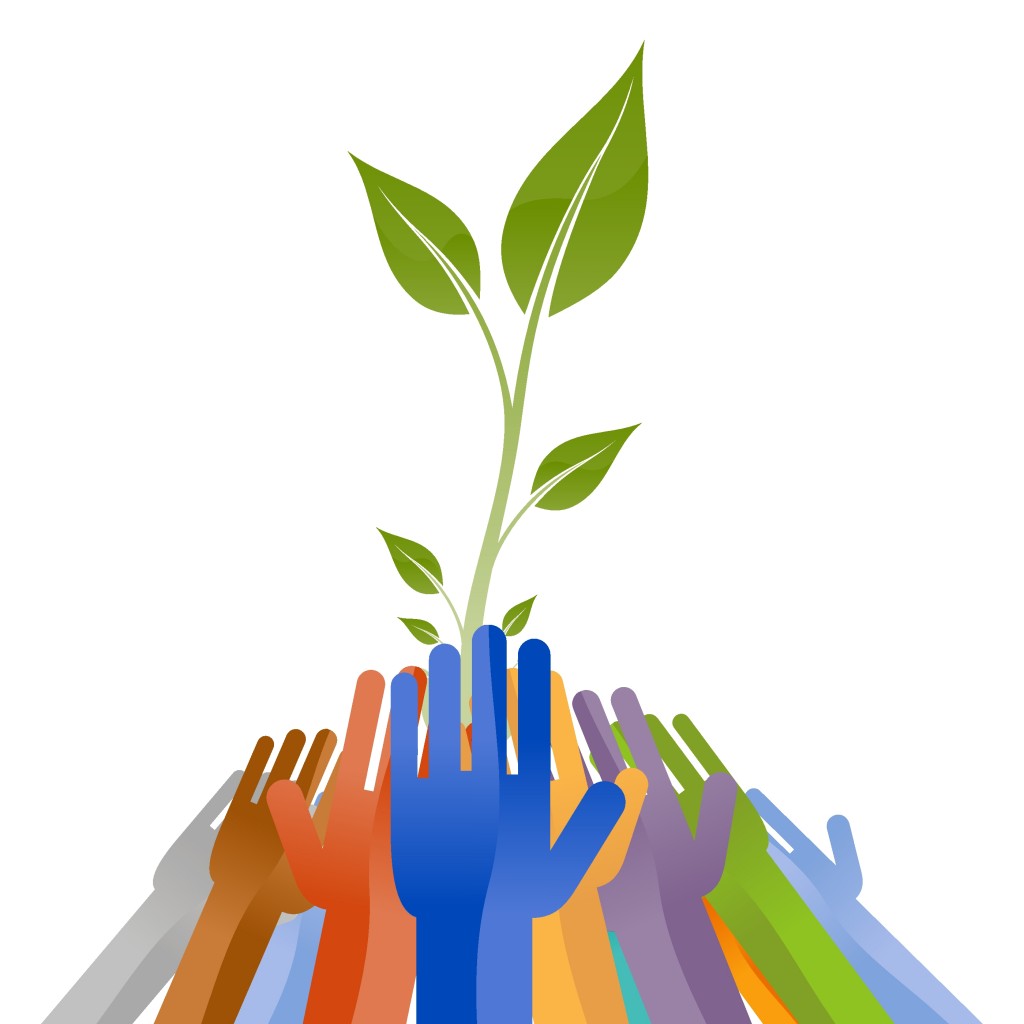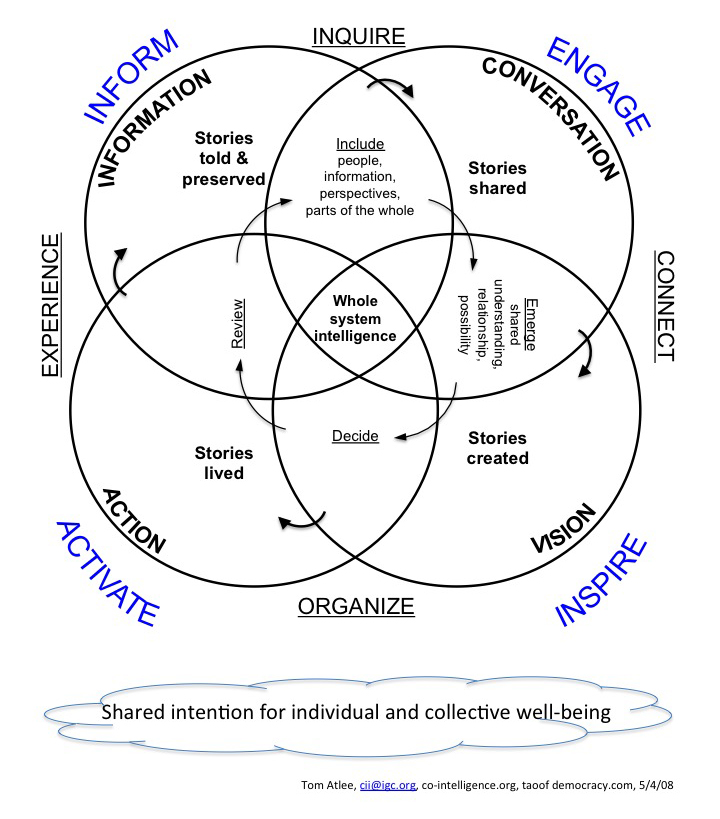Enjoy this short video from the workshop that Tova Averbuch, Christine Whitney Sanchez, and I did of our workshop, Engaging Possibilities: The Art & Science of Radical Appreciation, in Israel this summer:
Author: PeggyHolman
Journalism That Matters: Now What?
In the sixth post in my journalism series, I explore
The Changing News and Information Ecosystem: What Can You Do?
How can you contribute to a healthy journalism ecosystem?
Support the National Dialogue Network
I first learned of the fledging aspirations of the National Dialogue Network (NDN) last year at the National Coalition for Dialogue & Deliberation‘s Seattle Conference. NDN’s ambitious goal: to coordinate collaborative local conversations into mindful national dialogue.
After winning NCDD’s Catalyst Award for civic infrastructure, it has gone on to put its ideas into action.
Now, the National Dialogue Network wants you!!
Their inaugural topic is “Poverty & Wealth in America” and the process couldn’t be easier. You can:
- Participate by reviewing the background materials and answering their national survey, or
- Download their “conversation kit” to host/facilitate your own gathering of family, friends, neighbors, or community.
Either way, you’ll help us all learn more about what it takes to create a civic infrastructure that serves the needs of each and all of us.
What the National Dialogue Networks says about themselves:
The NDN coordinates distinct individual and community conversations giving everyone a “sense of place” and voice within the larger national dialogue. NDN’s dedicated volunteer’s seek to revitalize and promote civic infrastructures within communities where all who choose to participate will impact the national conversation by:
- Focusing intently on an issue over time with others;
- Listening to the opinions and ideas being discussed in your community and across the United States; and
- Speaking up about your own opinions and ideas in conversations with your family, friends & community.
Journalism That Matters: The Diversity Principle
Post #5 of my series on journalism is now up.
Navigating Through Uncertainty: The Diversity Principle
Innovation demands diversity, using our differences creatively.
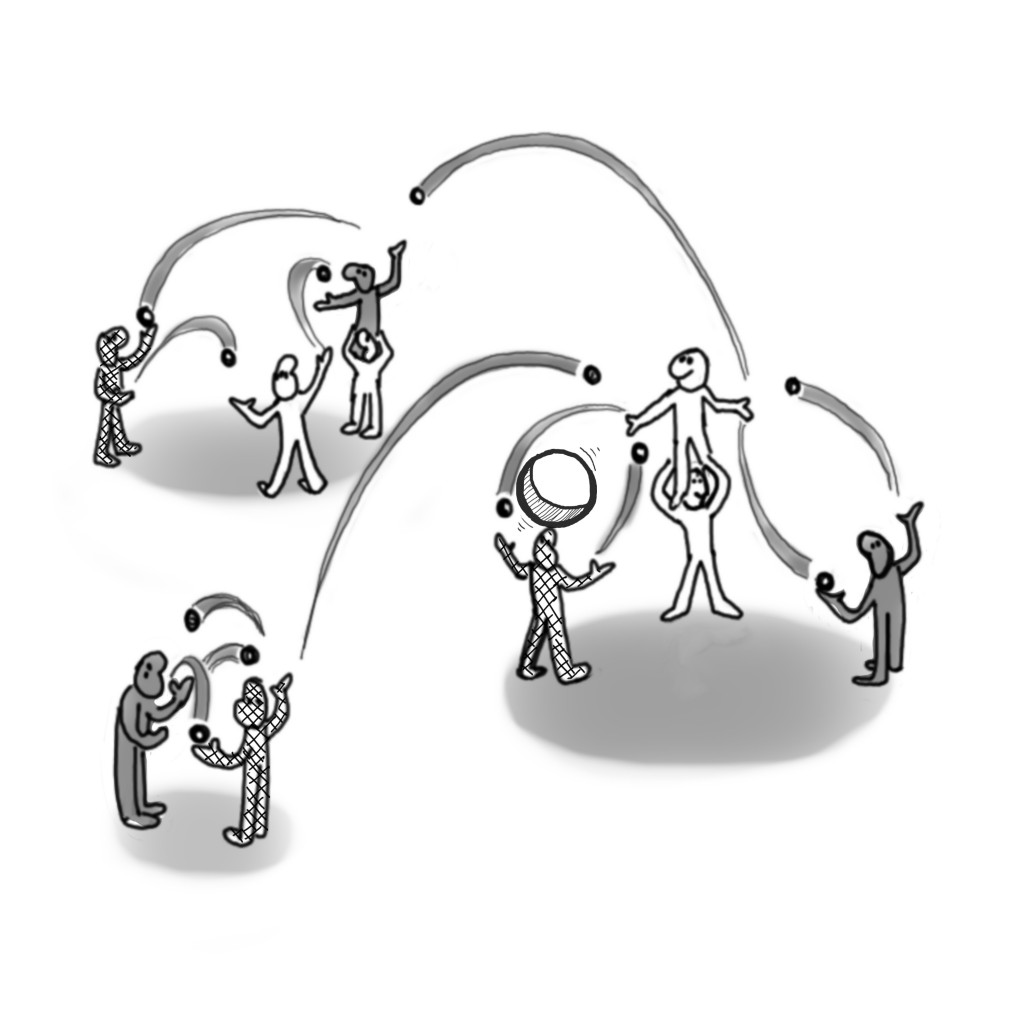
=======
Read the other posts in this series:
- What do we need from journalism?
- An expanded purpose for journalism
- Journalism for Navigating Uncertainty
- Changing the News & Information Ecosystem: What can you do? (coming soon)
- Mapping the News and Information Ecosystem (coming soon)
Journalism That Matters: The Engagement Principle
Post #4 in my journalism series is available:
Journalism for Navigating through Uncertainty: The Engagement Principle
Engagement increases respect, appreciation, and partnership between journalists and communities.

Journalism That Matters: The Possibility Principle
This next post in my journalism series,
Journalism for Navigating Uncertainty: The Possibility Principle
is getting to the heart of where my work in system change and my work with journalism really overlaps!
Check it out.
From JTM’s Pacific Northwest 2010 Conference Report, by Steven Wright
Journalism That Matters: Approaching journalism as a system
Here’s the second post in my series on what we need from journalism:
An Expanded Purpose for Journalism
What does a re-vitalized, economically viable journalism that meets the needs of communities and democracies look like?
Journalism That Matters: What’s Possible Now?
After years of working with journalists through Journalism That Matters, a nonprofit that I co-founded with three career journalists, I’m finally offering my perspective on what’s possible in the emerging news and information ecosystem.
Check it out:
What do we need from journalism?
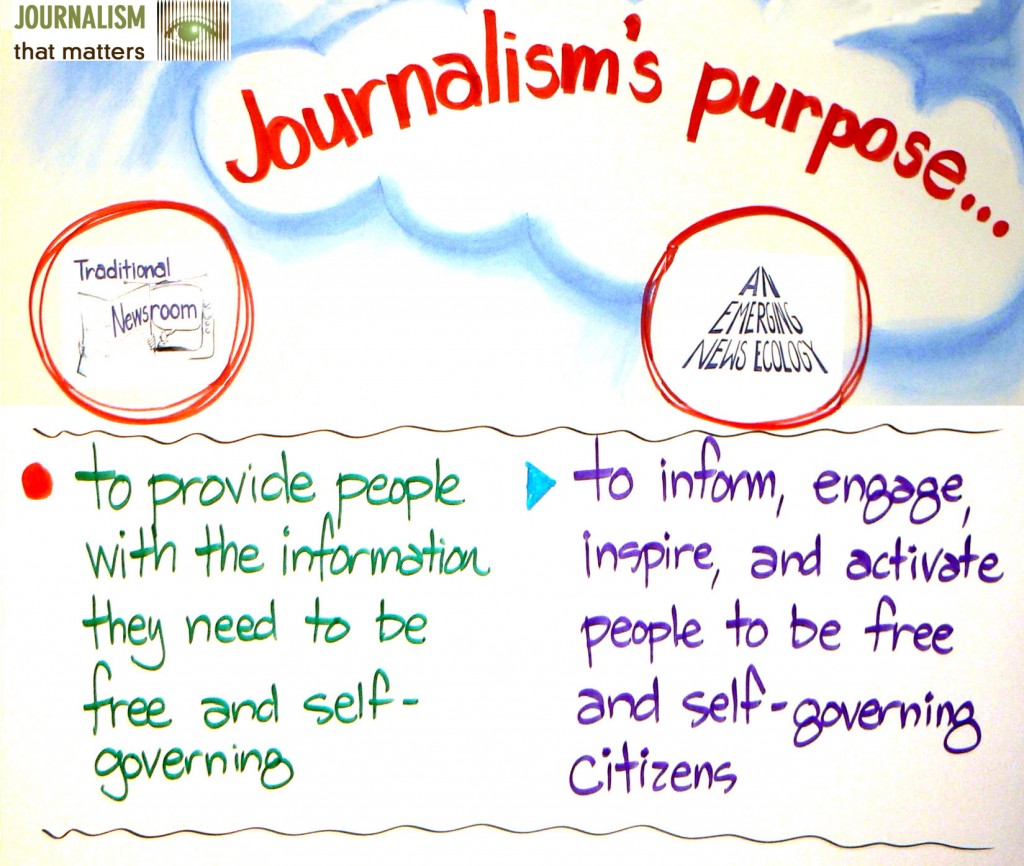
A Radio Interview on The Heart of it ALL
 On May 24, 2013, I joined radio hosts Sheri Herndon and Erik Lawyer on their weekly talk show, One Becoming One: The Heart of it ALL.
On May 24, 2013, I joined radio hosts Sheri Herndon and Erik Lawyer on their weekly talk show, One Becoming One: The Heart of it ALL.
The focus of the hour long broadcast was Navigating Through Chaos and Telling a New Story. We had a fine time talking about how best to work with upheaval and chaos. I talked a bit about the upcoming workshop I’m doing, Engaging Possibilities: Appreciative Inquiry and the Art of Radical Appreciation, on July 8-10 near Jerusalem, Israel. And we talked about journalism in changing times.
For more, listen to the conversation!
Designing for Community: Expect the Unexpected
Part V

Take a co-creative stand so that disruptions become a source of engagement and learning.
At a recent event that I attended, the focus was on community. The participants were from government, communities, and organizations with a socially oriented mission, both for profit and nonprofit. While mostly white, the 150 people there were sufficiently diverse in age, race, geography, and gender to make the setting spicy.
And then there was the design. Two days of talks, interspersed with small group conversations about the talks. The last day was in Open Space. Two conditions made for a rocky experience. The first: all but one of the in-person speakers were older white men. The second: with one exception, the speakers all lectured. While well intentioned, and unquestionably from a respectful place, the talks had a quality of bringing knowledge down from on high. The exception was a couple who shared their work and brought with them the questions they were striving to answer as part of their offering.
As the second morning started with yet another presenter, someone stood to voice his frustration. He beat me to it by the random selection of the holder of the microphone. The participant spoke clearly and respectfully. He made a request that we hear from a greater diversity of people. The conference hosts listened. They took in challenging feedback, redesigned over a break, and invited people to self-organize around topics of interest.
No matter how well prepared you think you are, stuff happens. Our brilliant design don’t always work as envisioned. That’s when grace under pressure helps.
Design Suggestion
Be prepared to be surprised. Just as practicing scales prepares the way for great jazz, knowing the rhythm and likely effects of the activities you choose equips you to meet the needs of a group in the moment. And like jazz, working with partners when hosting a large group can enrich the experience. Multiple sets of eyes provide more insight into a situation, along with putting a greater range of experiences and options at your finger tips.
Years ago, working with a team of four, I was virtually thrown out of a gathering by the participants of a conference that I had spent months organizing. As I put it at the time, I was standing still in the fire and I got burnt. Fortunately for the attendees, there were four of us holding the space. My partners could see what was happening and made sure the needs of the group were met.
As for me, it sent me on a learning journey that led to increased capacity to listen and adapt. I became far less dogmatic in my approach to my work with groups. And it sure makes me compassionate when other designers and hosts experience the unexpected!


